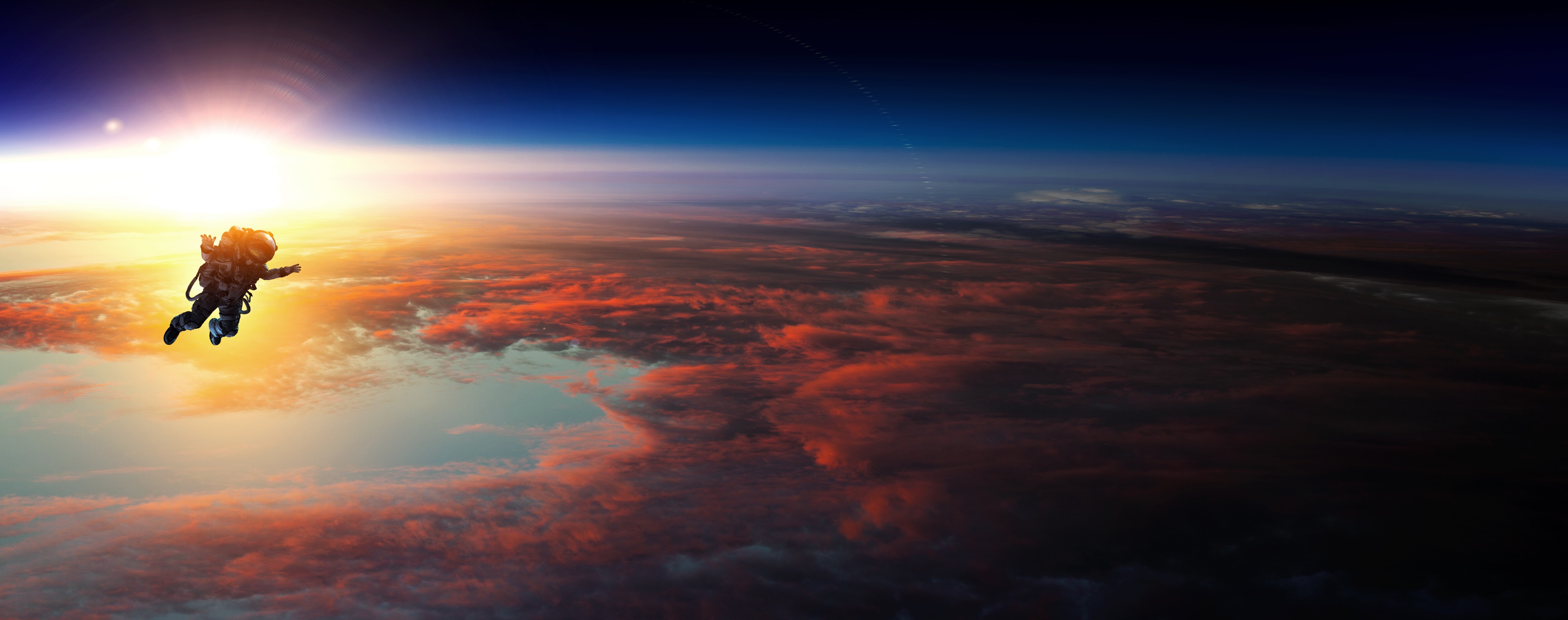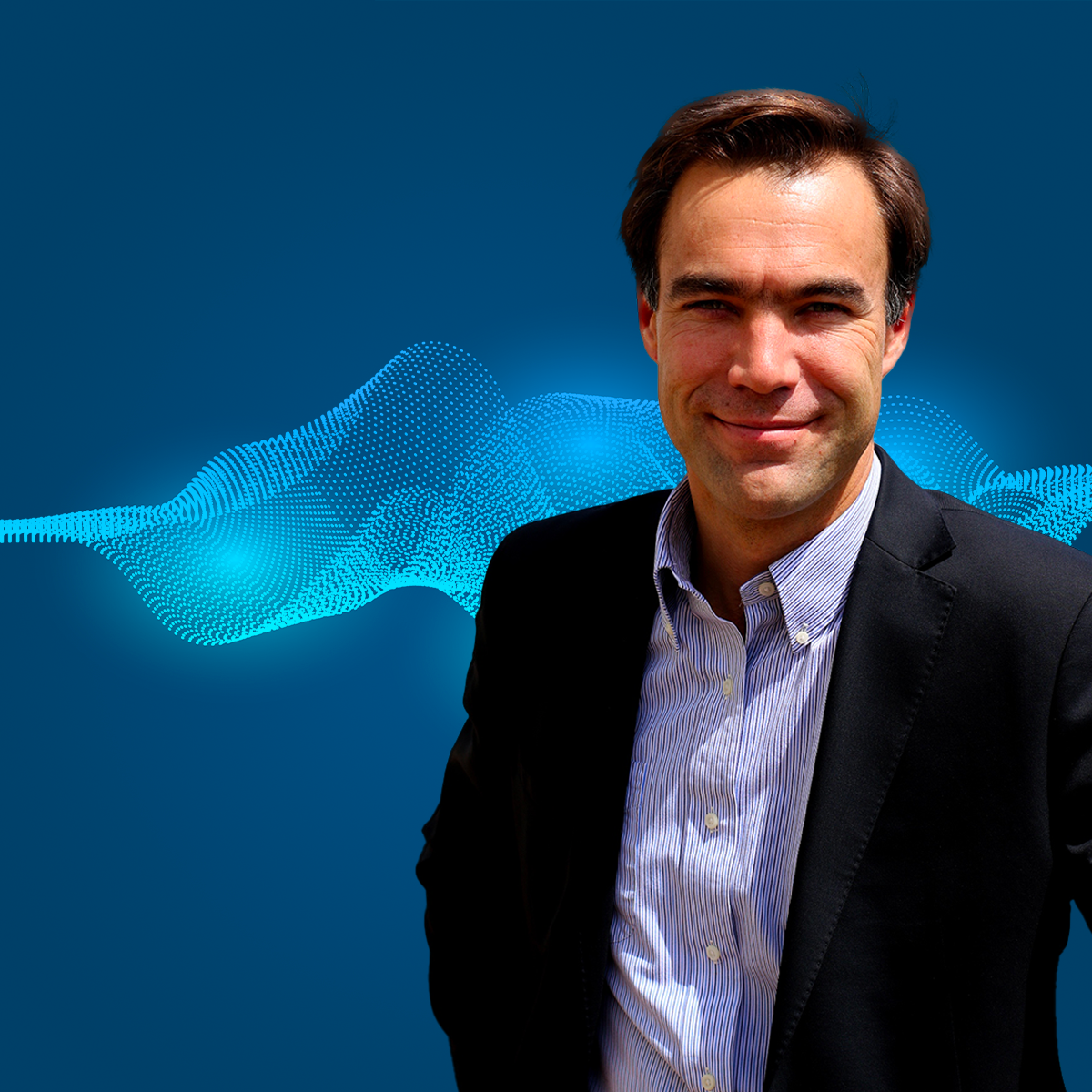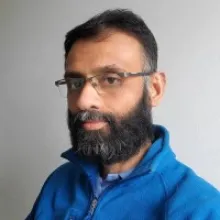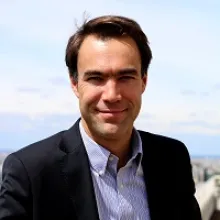New Space Unveiled: Where Businesses Should Invest
Witness the unfolding transformation of the space industry as it embraces the dawn of the "New Space" age. Prepare for a groundbreaking shift where private sector participation and innovation converge, propelling us into a new era of boundless possibilities.
Designing Impactful Innovation podcast - episode 8
In this episode, join us as we delve into the captivating realm of the space industry's remarkable evolution with David Ziegler, vice president of Aerospace and Defense at Dassault Systèmes. Brace yourself for an enlightening conversation as we explore the dynamic landscape of the "New Space" age, where private sector participation and innovation intertwine to shape an extraordinary future. Gain exclusive insights, firsthand experiences, and visionary perspectives that will leave you inspired and eagerly anticipating what lies ahead.
Meet our Speakers
We are going to resume deep space exploration and it will bring some exciting new opportunities in terms of technology.
You can follow the "Designing Impactful Innovation" podcast on Apple podcasts, Spotify, Deezer, YouTube or by RSS.
Stay tuned!
Read the transcript
Clara: Hello and welcome to the Designing Impact of Innovation Podcast. I'm Clara, your host. Today we'll be talking about the changing landscape of the space industry and key essentials for success in an ever-evolving market. I'm handing the mic to Arvind Krishnan, industry analyst at Lifecycle Insights and David Ziegler, vice president of Aerospace and Defense at Dassault Systèmes.
Arvind: Hello, everybody. Today we have with us David Ziegler, who is the VP of Aerospace and Defense at Dassault Systèmes. David, welcome to today's podcast.
David: Hello, Arvind. Glad to join.
David: Sure. Well, I'm the vice president of Aerospace and Defense for Dassault Systèmes, which, quite frankly, lets me think that I've got the best job in the company. The reason is that because my job entails essentially two actions.
The first one is to go all the way around the world meeting with our Aerospace and Defense customers and trying to understand from them where the future is headed in terms of innovation for industry.
And the other way around, I'm leveraging the incredible work that is done by our R&D engineers at Dassault Systèmes, and I promote our Virtual Twin Experiences to all Aerospace and Defense innovators. So that's quite exalting for a job.
Arvind: Yeah, looks like a very fun job to do, especially these days with a lot of new technologies and new companies venturing into space. So today we will talk about the New Space industry. When people like me think about the space age, really, we think of NASA, we think of Sputnik, we think of the Apollo program, we think of the European Space Agency.
You know, it is certainly dominated by the government players.
David: You're right, Arvind. You know, fundamentally, when we look back into the space age, we all think about Apollo and massive taxpayer money going into a government program. But it has changed quite a lot. You've seen in the recent years, of course, the epiphany of SpaceX, being the biggest space private contractor right now and very successful.
But there are a lot of other companies that are joining the fray, huge companies like Amazon and Blue Origin and a lot of others. But NASA has been leading the charge. And so is Europe, by the way, in terms of private contractors with the European Space Agency or the French space agency having specific programs for startups. And, by the way, so is India that is leading the charge in terms of privatization of the space sector.
So that's a fundamental change to that government-led program switching to more innovation and more technology, actually, going into space.
Arvind: That is indeed a big shift, isn't it? I can sense opportunities, but also challenges. Let us start with the challenges.
David: Well, Arvind, if you're a New Space company deciding to get into rocket science, there will be a lot of challenges. The first one, of course, is related to the access to space. It takes quite a long time to put your satellite into orbit. So you need to book your flight way in advance of your scheduled delivery time. And once it's your window, you need to make sure that everything is right the first time.
So you've got, definitely, no second chance to lift off. So that's point number one, I guess the number one challenge is to make sure that in terms of quality, you do everything right the first time.
The second thing or the second challenge, because there is a lot of competition out there, it's a developing market, but there are a lot of different competitors in there that want to provide better satellites or better launchers than you. So you have a first mover advantage that you need to secure. You need to be the first one to get your product to market.
Also, there is a big war on talent. There are not that many aerospace engineers all over the world. So people and companies are poaching talents from all over the world. So you need to be able to have your full team collaborating 24/7 on different continents, whether that's in the Silicon Valley or in the Space Valley in the U.S. or even in Europe, in Toulouse or Bremen, or even in India and other parts of the world.
I guess the other challenges are really more technical. First, on the engineering side, we are having satellites that are getting much smaller than before. So you need to work on a lot of integration, a lot of miniaturization on the electronics side but as well, a lot of integration between hardware and software.
And finally, on the manufacturing side, we are shifting really from the fact of producing one satellite or two or three or four satellites for each company every year to manufacturing something like 200 or even 300 satellites for a year. So we need to shift from essentially being craftsmen, doing one piece of art every year, to being much more robust on an industrial system. This is, I believe, what are the main challenges facing the new space industry.
Arvind: Well David, 300 satellites a year is pretty much like one satellite every day, even if you consider Sunday a holiday for satellite launch, that's a lot. I mean, with challenges come opportunities. At least that's the way I like to look at them.
David: Well, obviously the opportunities are huge in the space market. I mean, any forecast is saying that essentially in ten years from now, there will be ten times more satellites orbiting the earth. So a lot of opportunities abound into the manufacturing of satellites, of smaller satellites, what we call nanosatellites, the size of a shoebox, actually, toward the access to space, to making new rockets that are going to be much more agile and that will be able to bring satellites much faster to orbit than what the big guys currently can do.
So a lot of opportunities in there and a lot of opportunities, of course, in satellite design, in services and in satellite operations.
So how do we help these companies? That's a great question. The first thing we do at Dassault Systèmes is providing our customers with what we call Virtual Twin Experiences. Essentially, a virtual twin is the ability for a company to design, simulate their satellite, or their launcher, into the virtual world before it even reaches production. Which comes back to the challenge of that industry, which is to make sure you get things right the first time.
You don't have a second chance to lift off. So leveraging our virtual twin technology and our MODSIM technology, or modeling and simulation technology, proved to be very useful for New Space companies.
The second thing we're doing to help these innovators is essentially to provide them with a fully cloud-compatible solution. The 3DEXPERIENCE platform is fully cloud compatible, which means that you can instantly set up an engineering and manufacturing environment that is available for all your collaborators. Whether they're based in the U.S, in Europe or in Asia, you can all collaborate and ramp up very fast, which is essentially the third challenge that these companies have to face, which is international collaboration and the war on talents.
Finally, much more from a technical standpoint. In order to really perform the integration of software and hardware and to move toward what we call product line engineering, you absolutely need a platform that is fully able to master the elements of model-based systems engineering.
And this is what we do. Essentially with CATIA Magic, we're providing innovators with the capabilities to completely define the system architecture of their product into the virtual world, connected to the physical design, and enable them to simulate all their different architecture tradeoffs and finally move at the end toward product line engineering, therefore decreasing the cost of engineering.
And finally, in order to address the manufacturing challenge, what we do is we are connecting the dots between engineering and manufacturing by providing the same platform, the 3DEXPERIENCE platform, both for engineering and manufacturing. Meaning that you've got full digital continuity and you're able to increase the rate of production, your scheduling and your manufacturing right the first time. So this is essentially what we provide toward the startups, but also the major space companies out there.
And we've got great examples of companies leveraging our 3DEXPERIENCE platform in order to redefine the extent of what's possible. For example, Virgin Galactic is leveraging the 3DEXPERIENCE platform to do the full design, but also to prepare for the manufacturing of their spacecraft. And they are now looking at how they can leverage the platform in order to follow that aircraft around the full lifecycle, from design to manufacturing to operations.
We are also helping Airbus Space, which is the biggest space actor in Europe, to deliver their satellites from design to manufacturing. But we are also working with them on a specific project called the Virtual Twin of the Earth. Essentially, we are leveraging all the data coming from Airbus Space satellites in terms of images from the Pleiade Constellation and we're working with them to provide the Virtual Twin of the Earth.
So we are leveraging our simulation software portfolio to apply that toward essentially the images that are coming from the Airbus satellites to simulate, for example, what would be the events in case of a pollution coming into a big city. So we are looking at the weather forecast, how the reconstruction of the city would prevent the wings from blowing up and so on and so forth. So that's one example.
And finally, I'd like to finish with another startup, which I like very much, called Interstellar. Essentially, Interstellar is providing a biopod, right? It's a contained environment where you can grow plants. And that's going to be essential if we want to become a multi-planetary species. So essentially, Interstellar is using the 3DEXPERIENCE platform to develop these bio pods and make sure that when we go to the Moon or when we go to Mars, humans will be able to grow plants by themselves into a contained environment. That's quite, quite exciting.
Arvind: Indeed impressive and very, very interesting and intriguing for people – common people – especially someone like me. You know, it's really developing the entire ecosystem, not just a vehicle to transport people, but what you just said about Interstellar is really the whole ecosystem of producing food, creating an environment where plants can thrive – indeed fantastic! And we can't wait. And certainly you can and I certainly can't wait to see at least some of these things blossoming.
You know, it is now very interesting that the space race, as you said correctly, is actually forcing companies to get things right the first time. They are also requiring them to collaborate extensively with different players throughout the world and industry absorbs these things. I'm just curious about one little topic.
It certainly looks like the impact of this New Space is well beyond the aerospace or the space industry.
David: Obviously, the space revolution or New Space is not limited to commercial aerospace as well. It's also impacting, well – the next very close domain is defense, of course, where you're seeing, unfortunately, a lot of militarization of the space above our heads, with a massive change into the satellite’s designs and war in space. But beyond defense, it impacts really, I would say, all the different aspects of our economy.
Take, for example, transportation and mobility. You actually need some GPS. signals to be able to drive your car. If you're going to move toward autonomous cars, you will need, definitely, to have more accuracy of your GPS system. You will need, as well, to have constant communication, even in white zones where you don't have normal network satellites. This is why, by the way, you can think about Starlink, that belongs to the same owner as Tesla. And you can see the links between T&M and space right there.
But essentially, if you take a more global view, what's going to happen is we are going to have more than ten times the number of satellites that are orbiting the Earth today in operations ten years from now. So you will have 24/7 monitoring of the globe across all aspects, whether that's optical, whether that's electromagnetics, whether that's communication. So essentially, we'll have a full coverage of the globe by satellites. And what is really changing as well is that all that data will be available on your smartphone, on your smart device. So that's going to change.
A lot of that's going to enable a lot of different use cases across different industries. I talked about transportation and mobility, but you can see that, for example, in also very different industries like finance, by observing the Earth, you'll be able to follow the route stock of materials all across the globe and understanding what is the impact in terms of financing in different markets. In the construction industry, you'll be able to monitor the project realizations, whether we are talking about buildings, whether we're talking about massive construction projects like bridges or even cities, you'll be able to monitor the progress 24/7 of all your construction projects, and it doesn't stop there. I mean, think about urban planning, think about how to position your next generation 5G network. Where do you want exactly to position these antennas in order to optimize the placement of your network?
There are going to be tremendous different use cases and it's certainly going to impact the way we work on the Earth, that's for sure.
Arvind: Well, you brought out a plethora of applications across multiple industries and that is, David if I understand you correctly, the impact that we're going to see today, tomorrow. You're not talking about the distant future, right?
David: Yeah. This is very clear. All these changes are happening right now. If you look, for example, there are many different platforms that offer geospatial analytics today. And today you can really measure all the statistical data about weather monitoring all across Europe, of course. But also having a look at what we call the “Virtual Twin of the Earth”.
We're working with Airbus Space to leverage all of their images coming from their satellites and also leveraging our own simulation technology to simulate, for example, what would be the effect of a dispersant across the city, if there were any problems happening on their industrial sites. We are looking at different electromagnetic simulations as well across cities for 5G Internet.
So that's not something that is going to happen in five or ten years from now. It's happening right now.
Arvind: Fantastic. I mean, that's going to shift the way people actually perceive it. It really also talks about progress in real time, where normal citizens can monitor what is happening. And I know you mentioned on cell phones, which is pretty much ubiquitous, considering throughout the world people have access to cell phones as well as fast digital internet on their cell phone.
So it's really: transparency. It's really being able to see the progress no matter where you are and no matter what your placement in your economic sphere is and so on. So that's really exciting. Now David, this is indeed a major change that we are seeing and we will see in the very short future. But let's now look into a more distant horizon, you know, maybe a longer term.
Arvind: I mean, it could be after our time as professionals, but something that you can talk to us about then.
David: So what's going to be the impact in 10 to 20 years is really difficult to forecast, right? Because of the fast-paced technology. But as you know, in the coming years, mankind has decided to come back to the Moon. And I think that in the 10 to 20 years horizon, the plan is really to get to Mars and to make sure that some human guys are settling down on Mars.
So we are going to resume deep space exploration here, and it will bring quite some exciting new opportunities in terms of technology. Think about it. If somebody is living permanently on Mars, you need a full support system. You need not only, you know, the virtual twin of your product, but the virtual twin of your systems of systems, meaning your base, meaning the ships that are going to transport everything that you need in order to operate on Mars, but also the interactions and the simulations of humans in space.
So that's a full new ballpark that is going to happen, I guess, over the next 10 to 20 years. And if that is the goal, if really the goal is to venture into more deeper space exploration, then you will need a lot of new capabilities. You'll need able to be able build spaceships in space. You cannot rely on building everything into Earth and spending a lot of money, time and effort to send everything aboard in space.
You'll need to build more and more spaceships in space. And whether this is deep space exploration or even for satellites that need to stay in orbit much longer, we are going to see a saturation of the number of satellites orbiting the Earth and meaning we will need to work on sustainability. We’ll need to work on debris removal from all these satellites.
So in-space manufacturing, in-space tagging, that will be a big topic. And again, if we look further into the future, depending on the use case that we mentioned about geospatial analytics, we will require in terms of capabilities much more computing power in space. We cannot wait for all the data to come back on Earth and be treated locally. So you will have to have servers and networks in space that are going to work on specific analytics. So that's a full new industry. Think about the computer industry in space, actually.
Arvind: Fascinating David, fascinating. Just looks like reading a new futuristic science fiction. But I guess even in the last 30 years, the progress that we have made in other areas, suddenly these things are no longer just topics in science fiction textbooks. I’m very sure, you know, in the future, the next generation can look forward to many of the things you articulated.
So let me go back to a topic that is probably very relevant considering that we are in June and you are in Paris, David, and that really means Paris Air Show, right? That must be a big event for your city and also for Dassault Systèmes.
David: So right, Arvind. You know, it’s not only a big event for Dassault Systèmes and for me, but I think it's a major event for all Aerospace and Defense professionals worldwide. This is essentially where all professionals are gathering in order to define the future of aerospace. So with that in mind, we'll have the pleasure, in our chalet, to demonstrate to our customers, to our partners, the latest solutions. We’ll be able to demonstrate how much progress we've made in modeling and simulation with Virtual Twin Experiences, with model-based systems engineering, and really all the capabilities that are required to innovate at scale, as I mentioned before. So that's what's exciting.
And on top of that, we'll have different roundtables with senior officials. In the case of space, we will be able to dedicate the full Thursday toward space and we will be discussing, especially how our geospatial analytics can improve life on Earth with some very interesting people like the director from Karista Space, a private equity outfit, professionals coming from Airbus Defense and Space and the European Space Agency. So I’m really looking forward to that show coming up now in – actually 14 days from now!
Arvind: Right! I wish you the very best with the Air Show and I wish Dassault Systèmes and also your team a fantastic space show in Paris. I really look forward to seeing those new announcements and the new demonstrations that you mentioned and also some of the exciting stuff that you probably will unveil during the Paris show. So, David, thank you so much, it was really a pleasure talking to you today.
And you educated us quite a bit today on what's coming in space, what's happening right now and what we can foresee in the distant future. And also thank you for sharing with us all the Dassault Systèmes technology that enables new and upcoming startups and established players to actually make this exciting space journey. Very exciting not only for them, but also for all the humans on the planet today. Thank you so much. It was a pleasure again, talking to you.
David: Thank you Arvind. Let's make it fly together.
Clara: Thank you for listening to Designing Impactful Innovation. To find out more, go to 3ds.com/cloud. Don't forget to subscribe for more insights and stories from our guest experts!
Learn more
Ready to learn more?
See how the 3DEXPERIENCE platform on the cloud can transform your business. Fill out the form to get in touch with our experts.







